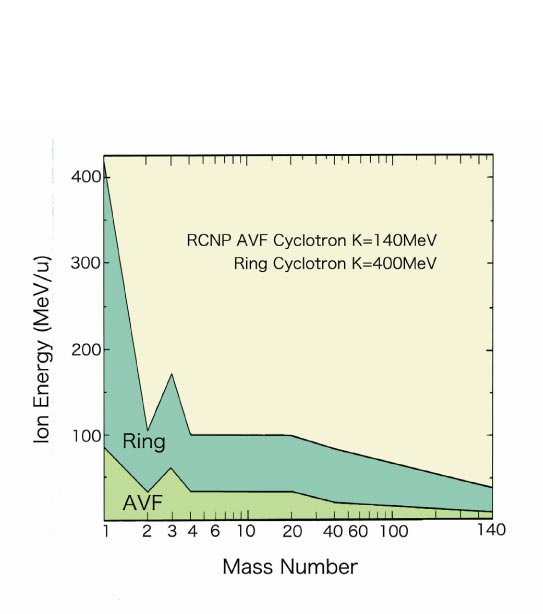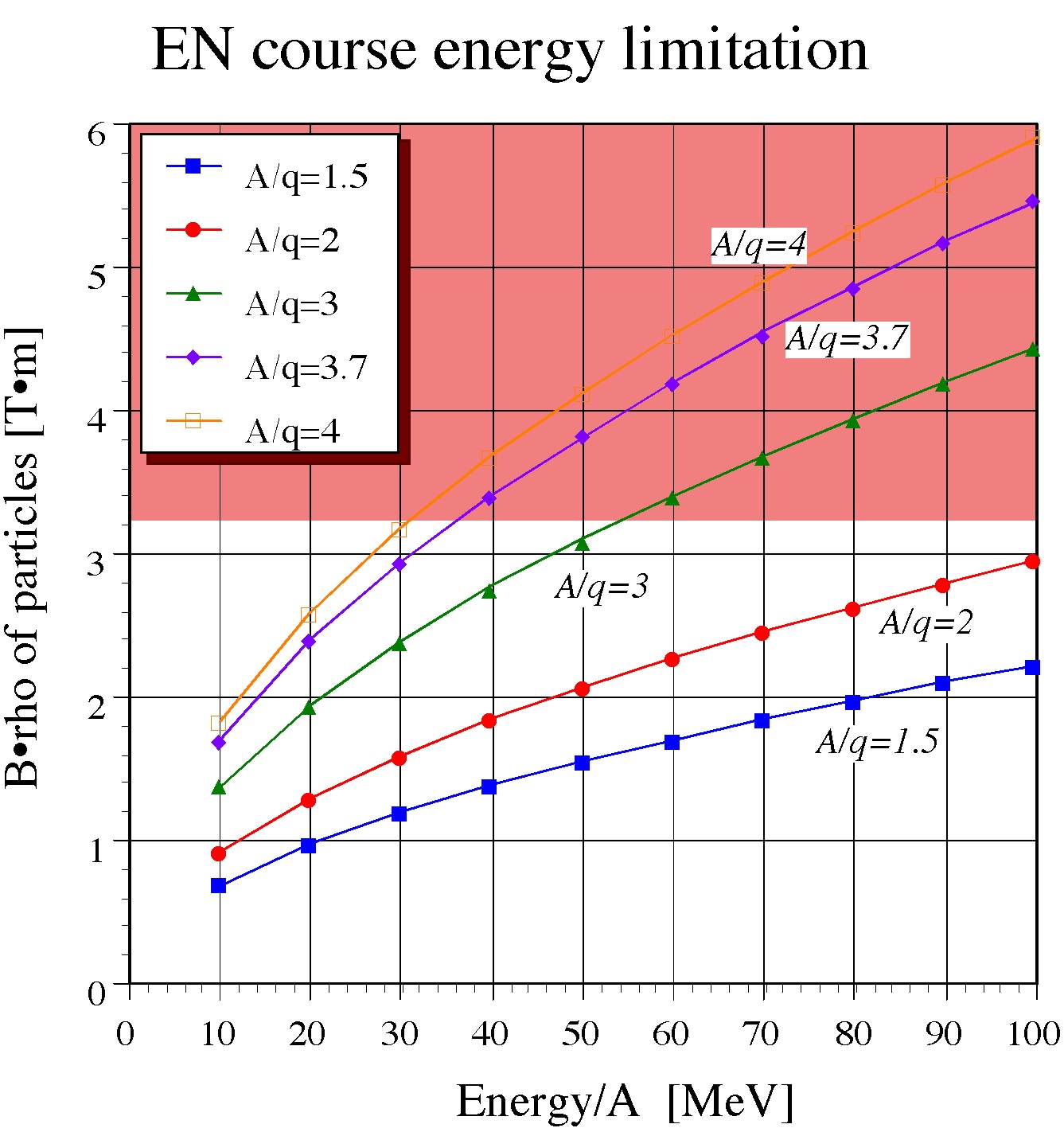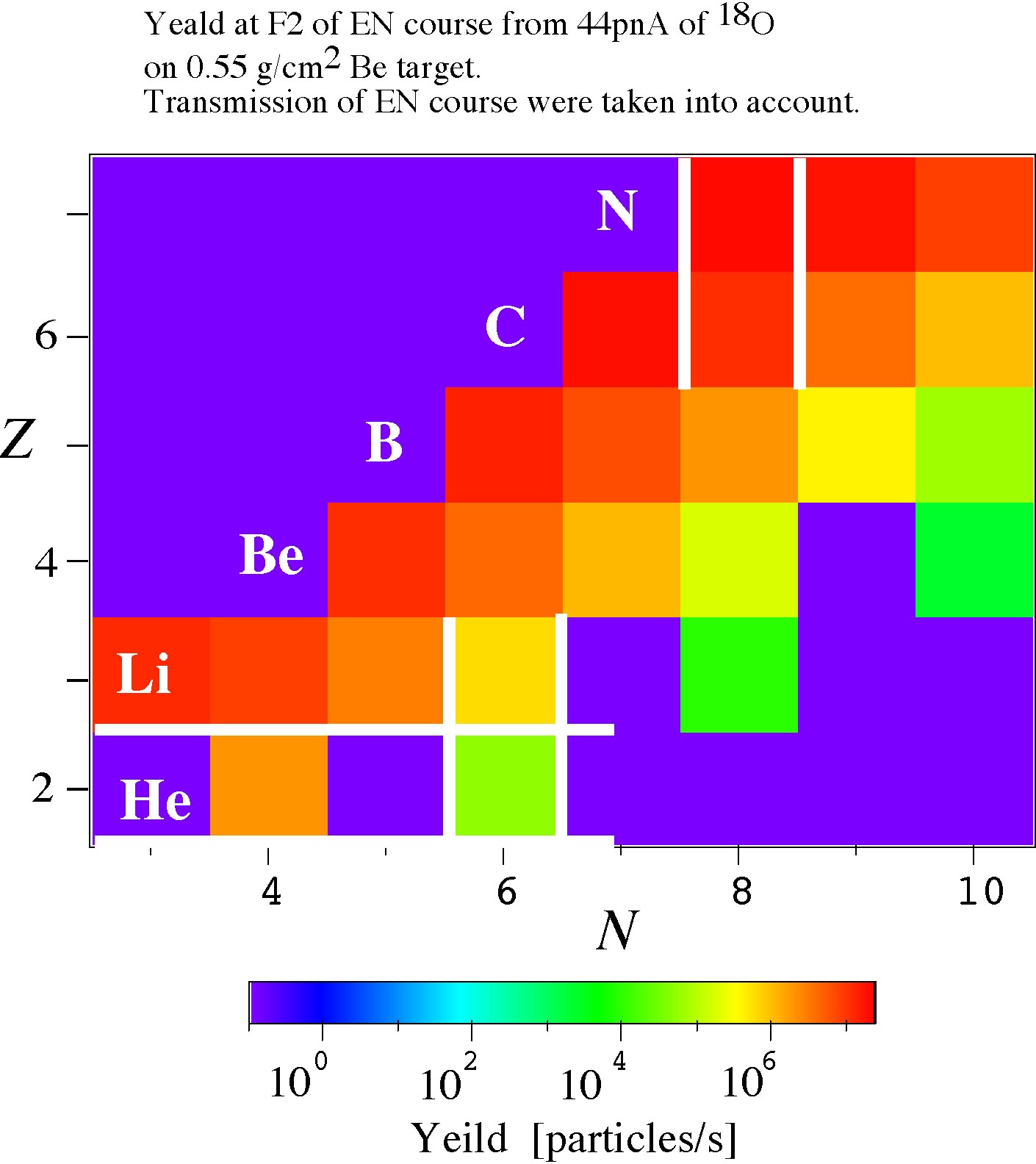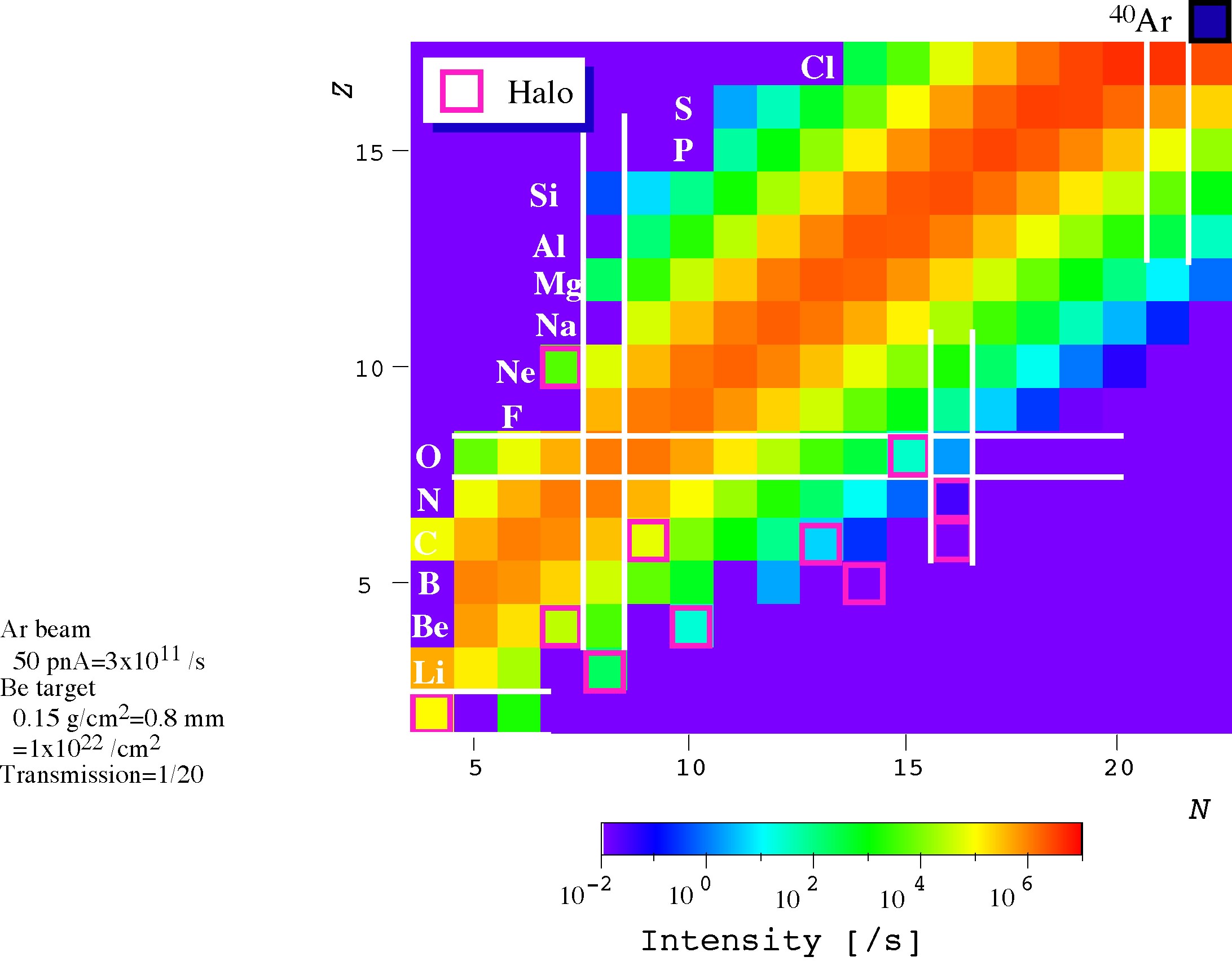Overview
| The RCNP EN course is dedicated to the study of atomic nuclei, in particular
the nuclei with excessive neutron(s) or proton(s). These nuclei, more commonly
known as neutron-rich or proton-rich nuclei, are naturally unstable and
are in most cases, naturally non-occurring. Since these nuclei are not
available as target, one has to find ways to produce them as beam in laboratories
in order to study their structures and /or the reactions involving them. In general, there are two methods of producing beams of unstable nuclei in laboratories. The first method is the so-called isotope-separation-on-line or ISOL method. In this method, a beam of stable nuclei irridiates a thick target, and the nuclei in the beam react with the target nuclei to form radioactive isotopes or radioisotopes (RI). These radioisotopes are stopped in the thick target before being melted and funneled into an ion source where they are ionized and reaccelerated. The need for extraction, ionization and reacceleration has hampered access to fast-decaying un-stable nuclei. Besides, this method is only feasible for elements that has relatively low melting points and that are chemically non-reactive. These shortcomings are complemeted by the second method. The second method is the so-called inflight fragments separation method. In this method, RI beams are produced through fragmentation reaction of a fast beam of stable heavy ions on a thin target. The RI beams thus produced have velocities close to that of the beam and can be separated inflight. Many isotopes can be produced with this method. The only setbacks of this method are the greater energy variance and beam divergence compared to the beams obtained with the ISOL method. |
|||||||||||
| The inflight fragments separation method is implemented at the RCNP EN
course. The EN course was completed in the early 1990s, together with the
RCNP ring cyclotron. Figure 1 shows the energy of the heavy-ion beams achievable
with the AVF cyclotron and ring cyclotron. The ring cyclotron is capable
of delivering heavy-ion beams with mass number A〜20 at energy up to about
100 MeV/nucleon. Recently, a direct beamline from the AVF to the EN course
that bypasses the ring cyclotron has been built, thus affording direct
access to light RI beams of energies of 10 -30 MeV/nucleon without having
to deccelerate the beams and severing the beam profile in the process.
This unique feature of the EN course may be useful for nuclear reaction
study, and shall be explored in the near future. |
 Fig. 1 Performances of RCNP AVF cyclotron and ring cyclotron. |
||||||||||
 Fig. 2 Available secondary beams at the EN course. |
The recent installation of a new 18GHz superconducting electron-cyclotron
-resonance (ECR) ion source has enabled productions of medium-heavy-ion
beams up to 86Kr and (possibly) 136Xe. This development has opened up new opportunities for the productions
of medium-heavy RI beams. The EN course has a maximum rigidity of 3.2 Tm. Figure 2 shows the maximum energy of various isotopes separable by the EN course fragment separator. For most neutron-rich nuclei (with A/q > 2), beam energy of up to about 40 MeV/nucleon is available. Hence, breakup reactions as well as transfer reactions can be performed. |
||||||||||
Table 1 Estimated intensity of heavy-ion beams. (Private communication with Prof. Hatanaka Kichiji) |
 Fig. 3 Estimated production yields from 44 pnA 18O beam on 0.55-g/cm2 thick 9Be target. |
||||||||||
| Demand for RI beams following increased interest in the study of unstable
nuclei has surged over the years. At present, the number of RI beam facilities
in the world is insufficient for efficient pursuit of interesting and/or
possible new physics. Therefore, the EN course, with modestly-intense heavy-ion
RI beams provided by the ECR ion course, is expected to play a role in
helping to spur progress in the nuclear physics research. Table 1 shows
the preliminary estimates for intensities of several heavy-ion beams. For
example, using a 44 pnA 18O beam, sufficiently intense projectile fragments as shown in Fig. 3 can
be obtained after separation by the EN course. Based on the calculation,
dripline nuclei 8He, 11Li and 14Be with intensities of 5.4 x 104, 1.0
x 104, and 2.2 x 103 /s are anticipated. These intensities are sufficient for reaction studies
as well as for spectroscopy studies. Another example of the intensities
of the projectile fragments expected from a 40Ar beam is given in Fig. 4.
A sample input file for LISE++ program is available at the end of this page.
In addition to the aforementioned heavy-ion beams, further development of ion sources for metallic would open up more
experiment opportunities in the near future. |
 Fig. 4 Estimated production yields from 50 pnA 40Ar beam on 0.15 g/cm 29Be target. |
||||||||||
| Besides RI beams, isomer beams can also be produced at the EN course, thus providing ample opportunities for study of isomer states. Together with other facilities such as the Grand Raiden spectrometer, the Large Acceptance Spectrometer (LAS), and the Neutron Time of Flight (NTOF) facility in RCNP, the EN course will contribute towards filling the nuclear physics jigsaw. | |||||||||||
| Sample input file for LISE++ program: EN_sample.lpp | |||||||||||
